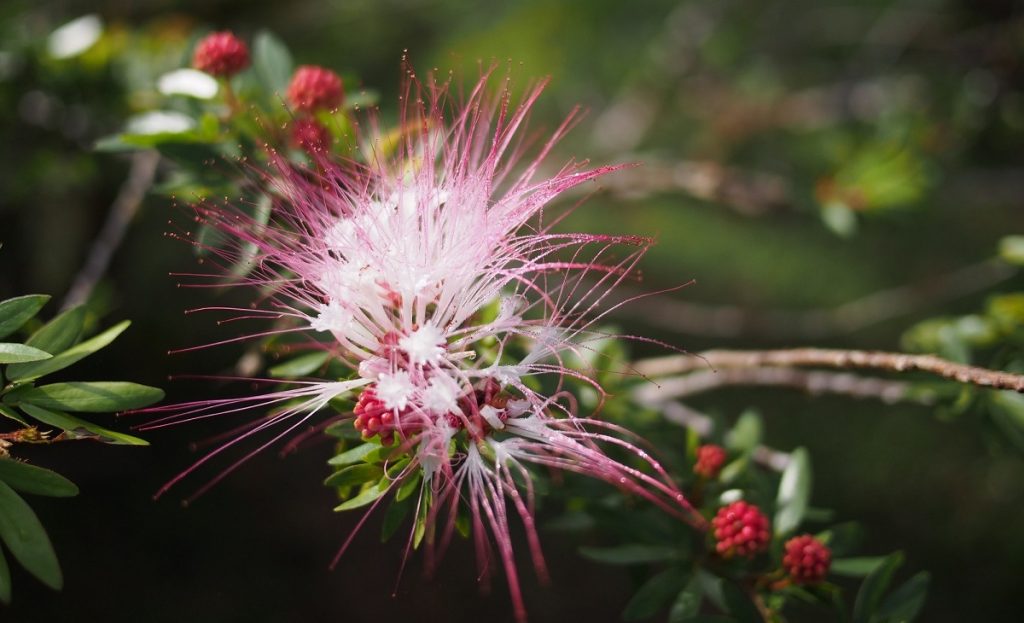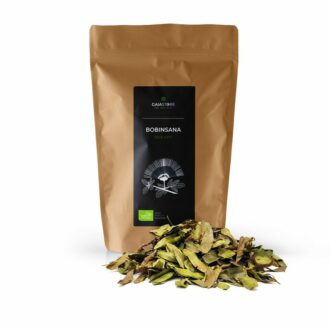Bobinsana 26/02/2020
Bobinsana, in Latin Calliandra angustifolia, is a medium-sized shrub growing up to a height of 6 meters. The herb likes wet climatic conditions, so we find it mostly in the Amazon rainforests in Peru, Ecuador, Colombia, Bolivia, and Brazil, mostly near waterways and basins. It boasts beautiful pink to reddish inflorescences with long stamens. The leaves are smaller in size, oval and grow twice folded along the stem.
Because of its complex effects on the body, it serves as a medicinal plant either alone or as an ingredient in the hallucinogenic drink Ayahuasca.
HISTORY
Bobinsana for its ability to mediate vision and communication with nature spirits known as plant teacher. Indigenous tribes in the Amazon have been using it for this purpose for hundreds of years. It is also considered a sacred medicine that helps to heal a person at all levels. It is said to have protective properties and protect users from evil spirits.
The plant is also part of an ancient so-called “la Dieta” ceremony in which shamans live in isolation for a long time (most often in the jungle), with only limited options for eating – mostly only plant-based foods. During such a diet, specific plants are consumed to help detoxify the body, provide energetic protection and optimize the level of physical and mental strength, such as Bobinsana.

CHEMISTRY
The exact chemical composition of the plant is still unknown. However, available sources indicate that Bobinsana is rich in amino acids, flavonoids and tannins.
It also contains the unique harmala alkaloid tetrahydroharmine, affecting the nervous system. This alkaloid is also one of the many alkaloids found in the Banisteriopsis Caapi. Unlike other harmala alkaloids, it has certain specifics – it does not cloud the mind and does not create a specific “hypnotic” harmala’s state. On the contrary, the mind sharpens and stimulates.
EFFECTS
Due to its active alkaloid content, Bobinsana acts as MAO Inhibitor (even serves as a weaker SSRI), so it increases serotonin levels in the brain and serves as an antidepressant. It is even described by the original tribes as “heart-opening medicine” – it helps to induce states of empathy, understanding, joy, and belonging.
Its nootropic effects are also known – it sharpens the mind and helps with concentration. With its combination of effects, it is a suitable means for meditation. Users report that regular consumption also awakens the ability of lucid dreaming.
In traditional medicine, Bobinsana is also used as a remedy for physical problems – it helps in the treatment of arthritis, rheumatism and uterine inflammation. It relieves the flu and colds and also helps with blood purification.
The decoction of the plant is also used as a vitalizer and a mild stimulant but does not prevent subsequent sleep.
DOSAGE
Leaves
Decoction of approximately 10 grams of leaves simmer in boiling water for 15 minutes.
Bark
Decoction of approximately 8 grams of bark, simmer in boiling water for at least 30 minutes. The active substances are released from the bark gradually, so it is advisable to boil the plant for a longer time, even an hour. To obtain the maximum amount of active substances, once boiled, the bark can be boiled in the same way for 1 - 2 more times.
60:1 extract:
Prepare this extract by pouring about half a teaspoon (0.5g) with hot water, stir and consume immediately.
Munay Tincture
Drop a few drops (3-8) under the tongue or mix with a little water or other drink as needed. Bobinsana is a gentle plant teacher, so make space to listen to it. This will maximize its healing effects. To apply, create a quiet space, pause for a moment, meditate, take a few breaths before applying, preferably with the appropriate intention for working with the plant.
-
TOP








